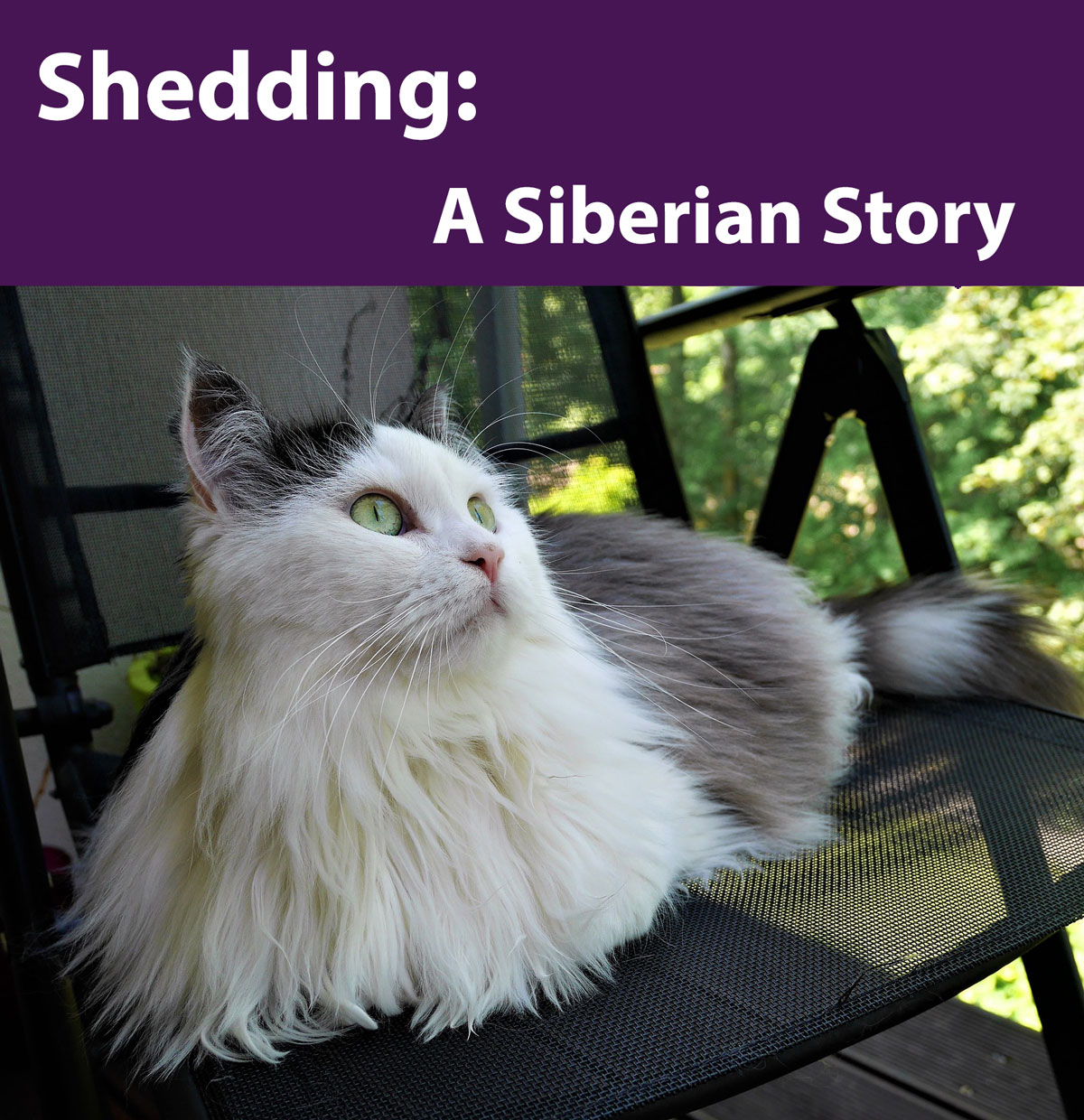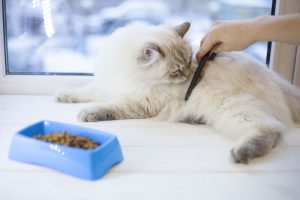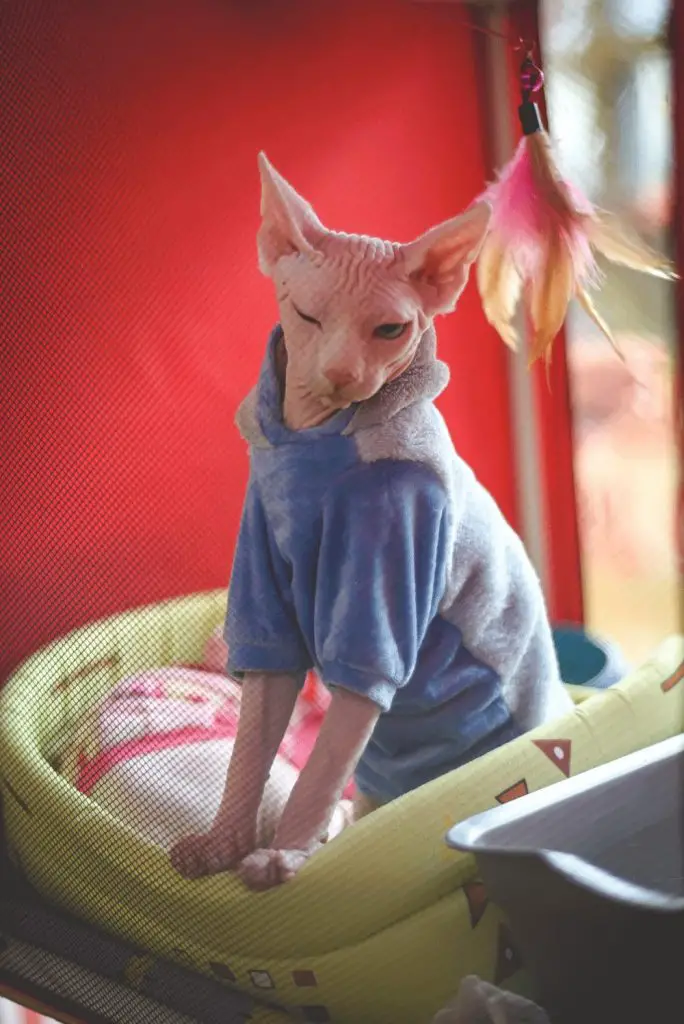[vc_row type=”in_container” full_screen_row_position=”middle” column_margin=”default” scene_position=”center” text_color=”dark” text_align=”left” overlay_strength=”0.3″ shape_divider_position=”bottom” bg_image_animation=”none”][vc_column column_padding=”no-extra-padding” column_padding_position=”all” background_color_opacity=”1″ background_hover_color_opacity=”1″ column_link_target=”_self” column_shadow=”none” column_border_radius=”none” width=”1/1″ tablet_width_inherit=”default” tablet_text_alignment=”default” phone_text_alignment=”default” overlay_strength=”0.3″ column_border_width=”none” column_border_style=”solid” bg_image_animation=”none”][vc_column_text]
 Perhaps best known by their fluffy coat and mane, the Siberian is well equipped for the harsh winters of Russia. Twice a year, though, this can only mean one thing…shedding! Compared to other fluffy cats Siberians are actually lower on the shedding scale, but any Siberian owner will probably balk in disbelief at that statement with the amount of Siberian hair they have coating their home. In this article we’ll cover everything you need to know about Siberian Cats and shedding and ways you can reduce the amount of hair around your home.
Perhaps best known by their fluffy coat and mane, the Siberian is well equipped for the harsh winters of Russia. Twice a year, though, this can only mean one thing…shedding! Compared to other fluffy cats Siberians are actually lower on the shedding scale, but any Siberian owner will probably balk in disbelief at that statement with the amount of Siberian hair they have coating their home. In this article we’ll cover everything you need to know about Siberian Cats and shedding and ways you can reduce the amount of hair around your home.
Their Coat
Siberians have a thick, triple layer coat consisting of guard hairs (outer coat), awn hairs (middle coat) and down (inner coat). Their thick down undercoat actually grows denser in the winter, and their guard hairs are oily and water resistant. Siberians are particularly recognizable by their exceptionally thick mane and fluffy tail.
Seasonal Timing
An important thing to note about Siberian Cats and shedding is that Siberians typically have two major shedding periods; once in the spring to shed their heavy winter coat, and another in the fall to shed their lighter summer coat and prepare to grow their winter coat again. However, seasonal shedding may be affected by whether your Siberian is an indoor or outdoor cat; exposure to only regulated climates can dampen their natural fur growth cycle.
Grooming Themselves
Cats can ingest up to two-thirds of the fur they shed from grooming themselves, which can lead to an excessive amount of hairballs. Reduce the amount of hairballs by grooming them with a brush more often.
Grooming by You
 To prevent their thick fur from clumping you’ll want to brush your Siberian at least once to twice per week during non-shedding times, and almost daily during shedding times. Brushing may take from 5-20 mins depending on how thorough you are.
To prevent their thick fur from clumping you’ll want to brush your Siberian at least once to twice per week during non-shedding times, and almost daily during shedding times. Brushing may take from 5-20 mins depending on how thorough you are.
It’s best to go with the direction of your Siberian’s fur as going against the grain can irritate your kitty.
Some Siberian owners like to avoid brushing the tail and the mane in order to maintain that sharp Siberian look. What’s unique about Siberian Cats and shedding is that their tail fur does not shed as often and grows more slowly than other cats so you may want to brush it less frequently in order to keep it at its poofiest!
The Best Cat Brushes to Buy
There are many types of cat brushes available (chewy.com has an excellent selection), including:
Dematting Tools – For long-haired cats who often get matted fur and have very thin wire teeth set on different angles designed to thoroughly groom your cat without hurting their skin.
Slicker Brushes – For medium to long-haired cats.
Grooming Mitts and Gloves – Made with rubber nibs on the palm area and are best for cats who are uncomfortable with brushes.
Rubber Brushes – Made with rubber teeth for sensitive cats.
Pin Brushes – For medium to long-haired cats that have wide-set teeth that are less aggressive than deshedding tools.
Bristle Brushes – Distributes natural oils and beautifies the coat, often paired with a pin brush to finish the grooming.
Tools and Rakes – For cats with thick coats who shed a lot. They have thin metal teeth that reach deep into your cat’s coat to remove all levels of loose hairs.
In general, deshedding tools (aka undercoat rakes) are a good choice for Siberians since they can reach all layers of their coat. Take note: if you have a female Siberian be careful when brushing her underside to not scratch her nipples with the fine teeth.
When is Shedding a Cause for Concern?
If your Siberian is losing patches of fur, shedding an excessive amount or scratching and biting at the same spot then it may be necessary to take them to a vet. Some issues that may cause excessive shedding include:
- Poor Diet
- Stress
- Pregnancy or lactation
- Sunburn
- Ringworm
- Bacterial Infection
- Fleas
- Hormonal Imbalance
- Allergies
Removing Siberian Fur from Furniture and Clothing
Have a job interview you don’t want to showcase your cat fur at? When it comes to Siberian Cats and shedding, hair all over the place will always be something you’ll have to deal with. Here are a few methods of cleaning up wayward Siberian fur from clothing:
- Lint rollers are your best friend. Keep one by your door, in your car and perhaps even at your place of work
- Put your clothes in a dryer with a dryer sheet or dryer ball for 10-20 minutes.
Likewise, if you don’t feel like bombarding guests in your home with cat fur, here are a few ways to remove it from furniture:
- Use damped rubber gloves – rub the damp rubber gloves over the surfaces of furniture and simply rinse them to clear the fur and repeat as needed.
- Spray a mixture of water and fabric softener on the furniture’s surface and then wipe off the fur
- To target fur on wooden or hard surfaces, use anti-static dusting spray to minimize the fur’s electric charge that keeps in clinging to the surface.
- On carpet, try wiping up fur with a pumice stone
- Vacuuming always works on carpet, you may just have to go over some spots a few extra times
- On hardwood laminate floors, use a microfiber dry mop as a vacuum may just blow fur around
Is it Possible to Stop my Siberian from Shedding?
In short, no. Siberians (and other longhairs such as Ragdolls and Maine Coons) have an extravagant coat, and therefore they will shed extravagantly. Using the grooming and fur removal recommendations above you can minimize the amount of hair hanging around your house, but you’ll never eliminate it.
If shedding is going to be a major issue for you, then getting a Siberian cat is probably not a good idea and you may want to consider several shorthair breeds such as Bengal Cats or Sphynx Cats that leave little to no hair.
[/vc_column_text][/vc_column][/vc_row]














